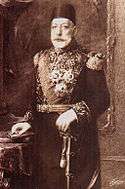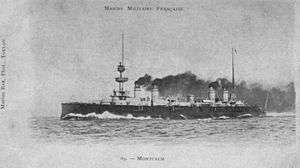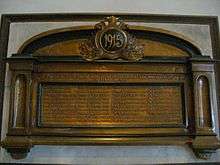1915 Singapore Mutiny
Part of a series on the |
||||||||||||||||||
|---|---|---|---|---|---|---|---|---|---|---|---|---|---|---|---|---|---|---|
| History of Singapore | ||||||||||||||||||
.svg.png) | ||||||||||||||||||
|
Early history (pre-1819)
|
||||||||||||||||||
|
British colonial era (1819–1942)
|
||||||||||||||||||
|
Japanese Occupation (1942–45)
|
||||||||||||||||||
|
Post-war period (1945–62)
|
||||||||||||||||||
|
Internal self-government (1955–62)
|
||||||||||||||||||
|
Merger with Malaysia (1962–65) |
||||||||||||||||||
|
Republic of Singapore (1965–present)
|
||||||||||||||||||
|
| ||||||||||||||||||
The 1915 Singapore Mutiny, also known as the 1915 Sepoy Mutiny or Mutiny of the 5th Light Infantry, was a mutiny involving up to half of 850 sepoys (Indian soldiers) against the British in Singapore during the First World War, linked with the 1915 Ghadar Conspiracy. The mutiny, on 15 February 1915, lasted nearly seven days and resulted in the deaths of 47 British soldiers and local civilians, before it was finally quelled by British forces and Allied naval detachments.
History
The Ghadar party (Ghadar is an Urdu, Hindi and Punjabi word for "mutiny" or "rebellion") was formed in the United States in 1913 by Har Dayal, with the aim of ousting the British from India, by armed revolution. The Ghadrites anticipated that Indian soldiers posted overseas would ally with them in their cause, and actively targeted them with propaganda, encouraging them to mutiny against the British. A few months after the outbreak of the First World War, the Ghadrites had attempted to incite elements of the 130th Baluchi Regiment at Bombay to mutiny, on 21 January 1915. The authorities had become aware of the plan however, and had taken preventive action by reassigning the soldiers to other outposts.[1] The Ghadrites then turned their attention to Singapore, whose regular garrison at this time consisted of only a single regiment of Indian soldiers plus a few British artillerymen and Royal Engineers, protecting British strategic interests.
Indian 5th Light Infantry
The 5th Light Infantry Regiment of the Indian Army arrived in Singapore from Madras in October 1914. They had been sent to replace the King's Own Yorkshire Light Infantry, which had been ordered to France.[2] The regiment was a long established one dating from 1803. Unusually for 1914–15 it was an entirely Muslim unit. The 5th Light Infantry mainly comprised Ranghars (Muslims of Rajput origin) and Pathans, commanded by British and Indian officers. Poor communication between the sepoys and their officers, slack discipline and a weak leadership meant that the troops' were disaffected, and propaganda from the Ghadar Party in India, campaigning for Indian independence from British rule, further disaffected the troops stationed in Singapore.
The specifically military grievances which led to the mutiny of the 5th Light Infantry centred on the personality of the commanding officer at the time, Lieutenant-Colonel E. V. Martin. He had been promoted from major in the regiment, although the previous colonel had reported that he was unpopular with his fellow officers and that he inspired little respect among the men. His appointment led to disunity amongst the British officers, which was in turn reflected by division amongst the Indian officers over the promotion to commissioned rank of a colour-havildar. These issues, which might under ordinary circumstances have been of limited impact, were aggregated by the disruptive external influences of the Ghadar Party propaganda noted above and the entry of Turkey into the war.[3]
Incitement

Mehmed V, the Sultan of Turkey, who sided with Germany after the First World War broke out, was widely regarded as the leader of the Muslim world. When Britain declared war on Turkey, the Muslims, including those in Singapore, were urged to oppose the British by a fatwa issued by the Sultan.[4] A pro-Turkey Gujarati coffee-shop owner, Kassim Mansur, visited the sepoys and even invited them to his home. Together with Nur Alum Shah, a religious leader, Mansur instilled anti-British feelings in the sepoys, and told them it was their religious duty to rise up against the British.[5]
The mutiny
On 27 January 1915, Colonel Martin announced that the 5th Light Infantry was to be transferred to Hong Kong for further garrison duties, replacing another Indian regiment. However, rumours were circulated among the sepoys that they might instead be sent to Europe or to Turkey to fight against their Muslim co-religionists.[6] Three Indian officers, Subedar Dunde Khan, Jemedar Christi Khan, and Jemedar Ali Khan, were later to be identified by a court of enquiry as key conspirators in this matter.[7] When the final order to sail to Hong Kong aboard the Nile arrived in February 1915, these and other ring-leaders amongst the sepoys decided that it was time to rebel. On the morning of 15 February, the General Officer Commanding Singapore addressed a farewell parade of the regiment, complimenting the sepoys on their excellent turn-out and referring to their departure the next day, without mentioning Hong Kong as the destination. At 3:30 pm on the afternoon of the same day, four Rajput companies of the eight companies making up the 5th Light Infantry[8] and 100 men of the Malay States Guides Mule Battery mutinied. The mostly Pathan sepoys of the remaining four companies did not join the mutiny, but scattered in confusion. Two British officers of the regiment were killed as they attempted to restore order.
The mutineers divided themselves into three groups. A party of 100 went to obtain ammunition from Tanglin Barracks, where 309 Germans, including crew members from the German light cruiser SMS Emden, had been interned by the British. The mutineers fired on the camp guards and officers without warning, killing ten British guards, three Johore troops present in the camp and one German internee. Amongst the dead were 2nd Lieutenant John Love Montgomerie,[9] Rifles; Sergeant G. Wald,[10] (Reserve) Engineers; Corporal D. McGilvray,[11] Rifles; Corporal G.O. Lawson,[12] Cyclist Scouts; Lance Corporal J.G.E. Harper,[13] Rifles; Private B.C. Cameron,[14] Rifles; Private F.S. Drysdale,[15] Rifles; Private A.J.G. Holt,[16] Rifles and Stoker 1st Class C. F. Anscombe,[17] HMS Cadmus.[18] Three British and one German were wounded, but survived the attack, as did eight Royal Army Medical Corps personnel in the camp hospital, including one who managed to escape under heavy fire to raise the alarm. The mutineers tried to persuade the Germans to join them, but many of the latter were shaken by the sudden violence and reluctant to do so. Some German sailors and reservists wanted to join with the mutineers, but the majority adopted a neutral stance, refusing to accept rifles from the Indians.[19][20] Thirty-five Germans escaped but the rest remained in the barracks.[6]
As it was the middle of the Chinese New Year, most of the Chinese Volunteers Corps were on leave, leaving Singapore almost defenceless against the mutiny. The British government was caught unprepared, and other mutineers went on a killing spree at Keppel Harbour and Pasir Panjang, killing 18 European and local civilians. Martial law was imposed and every available man from HMS Cadmus went ashore to join with British, Malay and Chinese Volunteer units and the small number of British regular troops forming part of the garrison.[21] British Vice-Admiral Sir Martyn Jerram[22] sent a radio message requesting help from any allied warships nearby.[6]
A group of mutineers laid siege to the bungalow of the commanding officer of the 5th Light Infantry, Lieutenant-Colonel E. V. Martin, which effectively blocked the route into Singapore Town. Martin and a detachment of the hastily mobilised Malay States Volunteer Rifles held out through the night of the 15th under sporadic fire. Loyal sepoys who tried to join them were ordered to "go to a safe place" to prevent their being confused in the dark with mutineers. With daylight, the defenders were successful in retaking the regimental barracks at the cost of one killed and five wounded.[23] The mutineers scattered, and despite sniper fire, the general population stayed calm while the volunteers, sailors and marines fought sporadic skirmishes with the mutineers.
Allied forces

On 17 February, the French cruiser Montcalm, followed by the Russian auxiliary cruiser Orel, and the Japanese warships Otowa and Tsushima arrived.[24] Seventy-five Japanese sailors, twenty-two Russians and 190 French marines were landed to round up mutineers who had taken refuge in the jungle to the north of Singapore.[25] They were joined in this operation by sixty soldiers of the 36th Sikhs who were passing through Singapore, plus Singaporean police, British sailors and Malay States Volunteer Rifles. Lacking strong leadership, the mutiny had started to lose direction – a large number of the mutineers surrendered immediately, and the rest scattered in small groups into the jungles. Many tried to cross the Strait of Johore, but were quickly rounded up by the Sultan of Johore's army.[26] While local media spoke of serious battles there were in fact only minor skirmishes between the allied landing parties and the now demoralized mutineers. By the evening of the 17th 432 mutineers had been captured.[27]
On 20 February, companies of the 1st/4th Battalion, King's Shropshire Light Infantry (Territorials) arrived from Rangoon to relieve the sailors and the marines. They succeeded in quickly rounding up the last of the mutineers.
Trial and public executions

On 23 February 1915, a court of inquiry was held, at first in secret, but then publicly, to ensure that a fair trial was seen to have been carried out in the crown colony. It lasted until 15 May 1915. Although extensive discord amongst both officers and men of the 5th Light Infantry was identified, the cause of the mutiny was not conclusively established. However, the inquiry agreed that insidious agents had incited the mutineers, who were swayed either by nationalistic or religious sentiments, to band together to fight against their perceived injustice.[28]
More than 200 sepoys were tried by court-martial, and 47 were executed, including Kassim Mansoor. Nur Alam Shah was not put on trial, although he was exposed as an active Indian nationalist with links to Ghadar.[29] Instead, he was detained and deported, as the British did not want to stir up trouble among their Muslim subjects. Sixty-four mutineers were transported for life, and 73 were given terms of imprisonment ranging from 7 to 20 years. The public executions by firing squad took place at Outram Prison, and were witnessed by an estimated 15,000 people. The Straits Times reported:
An enormous crowd, reliably estimated at more than 15,000 people, was packed on the slopes of Sepoy Lines looking down on the scene. The square as before was composed of regulars, local volunteers and Shropshire under the command of Colonel Derrick of the Singapore Volunteer Corps (SVC). The firing party consisted of men from the various companies of SVC under Captain Tongue and Lieutenant Blair and Hay.[30]
The remnants of the 5th Light Infantry, numbering 588 sepoys plus seven British and Indian officers, left Singapore on 3 July 1915 to see active service in the Cameroons and German East Africa. They were not accompanied by Colonel Martin, who was heavily criticised by a court of inquiry and then retired from the Army. In 1922 the 5th Light Infantry was disbanded.[1] Much the same fate befell the Malay States Guides; they were sent to Kelantan in Malaya to quell Tok Janggut's uprising at Pasir Puteh in April 1915. Afterwards the Guides were sent to fight in Africa and were disbanded in 1919.[31]
Aftermath

The episode persuaded much of the British community in Singapore that they could no longer depend on Indian soldiers to garrison the colony. Although Japanese, French and Russian sailors and marines had helped to suppress the mutiny there was increasing doubt as to whether reliance could be placed on Britain's wartime allies for future help in the perpetuation of their empire. Subsequently, all Indian nationals in Singapore were required to register, causing ill-feelings amongst a predominantly loyal community.[32]
To enhance Singapore's internal security, the British passed the "Reserve Force and Civil Guard Ordinance" in August 1915, requiring compulsory military service from all male subjects between 15 and 55 years of age who were not in the armed forces, volunteers or police.[31]
It has been argued that the mutiny was an event that not only caught the British off-guard but also shook the foundation of British rule in Singapore.[33] However the absence of involvement by the population of Singapore in an affair involving a battalion from India on temporary garrison duty in the colony makes this a doubtful contention.
Sensing weakness in Britain's handling of the mutiny, extreme Indian revolutionaries began to court overseas sepoys more aggressively, and cultivated a friendship with Japan for the overthrow of the British in India. Their plans bore fruit with the formation of the Indian National Army, led by Netaji Subhas Chandra Bose, during the Second World War Japanese occupation of Singapore.
Commemoration
To commemorate the event and those British soldiers and civilians killed during the mutiny, two memorial tablets were erected at the entrance of the Victoria Memorial Hall and four plaques in St Andrew's Cathedral.[34] In addition, two roads were later named in memory of two of the casualties as Harper Road and Holt Road, after Corporal J. Harper and Private A.J.G. Holt respectively.[35]
References
Notes
- 1 2 Sareen, "Preface".
- ↑ "Commentary on the Mutiny". The New York Times. 2 May 1915.
- ↑ Philip Mason, page 426 "A Matter of Honour", ISBN 0-333-41837-9
- ↑ Ban, p. 53.
- ↑ Sareen, "Report Section II" pp. 39–40.
- 1 2 3 Sareen, pp. 11–14.
- ↑ Harper, R.W.E. (1984). Singapore Mutiny. Oxford University Press. p. 22. ISBN 0-19-582549-7.
- ↑ Philip Mason, pages 426–427 "A Matter of Honour", ISBN 0-333-41837-9
- ↑ "Life story of John Love Montgomerie from Lives of the First World War".
- ↑ "Life story of George Wald from Lives of the First World War".
- ↑ "Life story of Donald McGilvray from Lives of the First World War".
- ↑ "Life story of Gordon Onslow Lawson from Lives of the First World War".
- ↑ "Life story of J G E Harper from Lives of the First World War".
- ↑ "Life story of Bernard Cuthbert Cameron from Lives of the First World War".
- ↑ "Life story of Frank Stuart Drysdale from Lives of the First World War".
- ↑ "Life story of Alec John Grice Holt from Lives of the First World War".
- ↑ "Life story of Charles Frederick Anscombe from Lives of the First World War".
- ↑ "Roll of Honour".
- ↑ R.W.E. Harper & Harry Miller, pages 62–71 "Singapore Mutiny", ISBN 0-19-582549-7
- ↑ Herbert, Edwin (2003). Small Wars and Skirmishes: 1902–1918 – Early Twentieth-century Colonial Campaigns in Africa, Asia and the Americas. Foundry books. p. 223. ISBN 1-901543-05-6.
- ↑ R.W.E. Harper & Harry Miller, pages 122–123 "Singapore Mutiny", ISBN 0-19-582549-7
- ↑ "Life story of Thomas Henry Martyn Jerram from Lives of the First World War".
- ↑ "Narrative of Their Doings in the Mutiny". The Straits Times. 26 April 1915.
- ↑ Sareen, pp. 14–15.
- ↑ Harper, R.W.E. (1984). Singapore Mutiny. Oxford University Press. pp. 172–175. ISBN 0-19-582549-7.
- ↑ "The Mutiny". The Straits Times. 26 March 1915.
- ↑ Harper, R.W.E. (1984). Singapore Mutiny. Oxford University Press. pp. 175–179. ISBN 0-19-582549-7.
- ↑ Sareen, "Report Section II".
- ↑ Ban, "Tales of Unrest", pp. 28–29.
- ↑ "Execution of Twenty Two Renegades". The Straits Times. 26 March 1915.
- 1 2 Ban, pp. 56—58.
- ↑ Sareen, "Proclamation Under Martial Law", p. 822.
- ↑ Kuwajima, p. 1.
- ↑ "1915 Indian (Singapore) Mutiny". Singapore Infopedia. Archived from the original on 12 June 2007. Retrieved 14 June 2007.
- ↑ Savage, p. 145, 150.
Bibliography
- Sareen, T.R. (1995). Secret Documents on Singapore Mutiny 1915. New Delhi: Mounto Publishing House. ISBN 81-7451-009-5.
- Ban, Kah Choon (2001). Absent History: The Untold Story of Special Branch Operations in Singapore 1915–1942. Singapore: SNP Media Asia. ISBN 981-4071-02-1.
- Kuwajima, Sho (1988). First World War and Asia–Indian Mutiny in Singapore (1915). Japan: Osaka University.
- Victor R Savage; Brenda S A Yeoh (2004). Toponymics–A Study of Singapore Street Names (2nd Ed). Singapore: Eastern Universities Press. ISBN 981-210-364-3.
Further reading
- Barley, Nigel (2006). Rogue Raider – The Tale of Captain Lauterbach and the Singapore Mutiny. Singapore: Monsoon Books. ISBN 981-05-5949-6.
- Comber, Leon (2009). "The Singapore Mutiny (1915) and the Genesis of Political Intelligence in Singapore". Intelligence and National Security. 24 (4): 529–41. doi:10.1080/02684520903069462.
- Harper, R. W. E. & Miller, Harry (1984). Singapore Mutiny. Singapore: Oxford University Press. ISBN 0-19-582549-7.
- Indian Mutiny in Singapore, 1915: People who Observed the Scene and People who Heard the News; New Zealand Journal of Asian Studies, Volume 11, No. 1 June 2009
